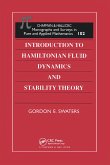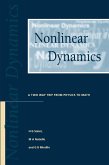The dynamics of realistic Hamiltonian systems has unusual microscopic features that are direct consequences of its fractional space-time structure and its phase space topology. The book deals with the fractality of the chaotic dynamics and kinetics, and also includes material on non-ergodic and non-well-mixing Hamiltonian dynamics. The book does not follow the traditional scheme of most of today's literature on chaos. The intention of the author has been to put together some of the most complex and yet open problems on the general theory of chaotic systems. The importance of the discussed issues and an understanding of their origin should inspire students and researchers to touch upon some of the deepest aspects of nonlinear dynamics. The book considers the basic principles of the Hamiltonian theory of chaos and some applications including for example, the cooling of particles and signals, control and erasing of chaos, polynomial complexity, Maxwell's Demon, and others. It presents a new and realistic image of the origin of dynamical chaos and randomness. An understanding of the origin of randomness in dynamical systems, which cannot be of the same origin as chaos, provides new insights in the diverse fields of physics, biology, chemistry, and engineering.
Review from previous edition The strengths of the book lie in its broad survey of the complexity of Hamiltonian dynamics and its focus on interesting physical examples. The book has many excellent figures and illustrations as well as an extensive bibliography. Each chapter has a modest collection of associated exercises. William Satzer, Zentralblatt Math







